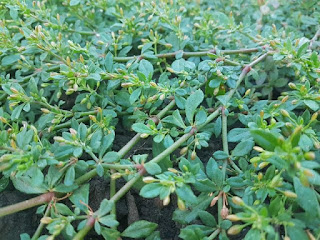NEEM TREE
(Azadirachta indica)
HEALTH BENEFITS
bruises and sprains
arthritis
malaria
jaundice
intestinal parasitism
hemorrhoids
wounds
diabetis
leprosy
scabies
treatment of head lice
ulcers
eye problems
pain and fever
urinary disorder
cough
asthma
PROPERTIES
antibacterial
hypoglycemic
antiulcer
antifertility
spermicidal
anti-malarial
antitumor
immunomodulatory
hepatoprotective
antioxidant
antifungal
anti-inflammatory
spermicidal
antifungal
insecticidal.
Neem is a medium-sized tree growing to 15 meters high, with wide spreading branches forming an oval crown. Leaves are pinnately compound. The drooping leaflets are 1 centimeter long, paired, lanceolate, acuminate with serrated margins. The blade is shiny dark green on the upper surface and pale green on the underside. Flowers are numerous, small, white and fragrant.
Edibility
- Leaves and flowers are edible.
- Leaves used for making tea.
Folkloric
- Poultice of leaves for swollen glands, bruises and sprains.
- Decoction of leaves used for arthritis.
- Fresh leaf-tea used for malaria.
- Bark used for malaria.
- Tree and root barks have been used for malaria, jaundice, and for intestinal parasitism.
- Edible pulp of the fruit used for hemorrhoids, intestinal worms, wounds, diabetes, and leprosy.
- Flower used for controlling phlegm and treatment of intestinal worms.
- Used for scabies and many other skin diseases.
- Applied directly for treatment of head lice, wounds, skin ulcers.
- When soaked in water, used for bathing and as postcoital contraceptive.
- Spermicide made from plant sold in India.
Ayurvedic medicine
• Leaf- leprosy, intestinal parasites, eye problems, skin ulcers
• Bark - pain and fever.
• Flower - bile suppression, intestinal worms and phlegm.
• Fruit - piles, intestinal worms, urinary disorder, nose bleeding , phlegm, eye problem, diabetes, wounds and leprosy.
• Twig - cough, asthma, piles, intestinal worms, spermatorrhoea, urinary disorders, diabetes.
• Gum - ringworm, scabies, wounds and ulcers.
• Seed pulp and oil- leprosy and intestinal worms.
• Neem oil may be useful for gingivitis.
• Oil used intravaginally for spermicidal and contraceptive properties.
Toxicity Studies
• Acute Toxicity Study of Neem Oil: Study of neem oil by oral route in rats and rabbits showed dose-related pharmacotoxic symptoms along with biochemical and histopathological indices of toxicity, with the changes in the lungs and CNS as target organs of toxicity.











